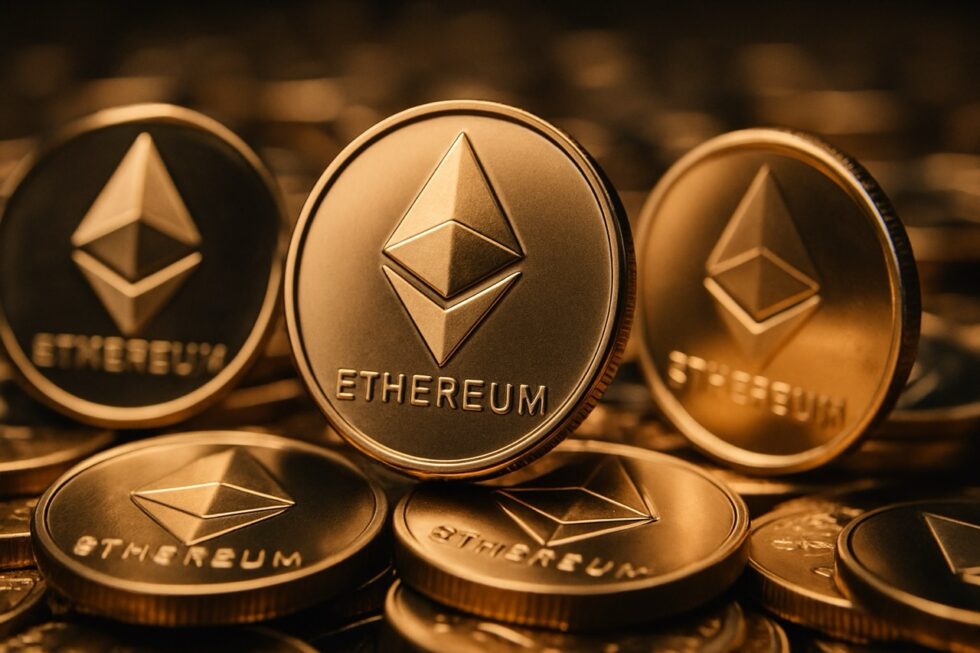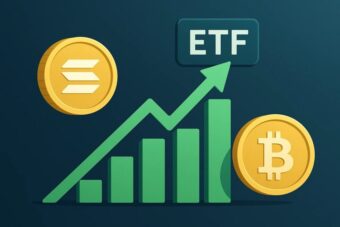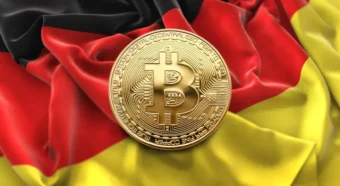Crypto News: Ethereum Nears the $5,000 Mark – ETF Boom, Corporate Buys and US Rules Drive the Market, But Risks Remain

Ethereum is trading at levels not seen since its record year of 2021 — currently around $4,726 per token, only a few percent below its all-time high of $4,878 set in November 2021. The surge rests on three pillars: corporate treasury purchases, accelerating ETF inflows, and policy tailwinds in the United States. Optimism is back — but so is the memory of how quickly momentum can reverse near record highs. This is also reported by G.business, citing Handelsblatt.
Why Ethereum matters to the real economy of crypto
Unlike Bitcoin, which is often treated as “digital gold,” Ethereum is the infrastructure layer for smart contracts, decentralized finance (DeFi), NFTs, and especially stablecoin transactions. Industry estimates suggest around half of all stablecoin transfers are processed on Ethereum — a structural driver of on-chain activity, fees and long-run demand for ETH as the network’s fuel.
Price context and market structure
After a long drawdown and months of uncertainty, Ethereum has rallied 84.4% over the past three months, outpacing Bitcoin’s ~17.8% gain in the same period. Market share has shifted: ETH now accounts for about 13% of total crypto market capitalization versus ~56% for Bitcoin, narrowing the gap from three months ago when ETH hovered near 9%and BTC exceeded 60%. Technically, the market is testing the ceiling created by the 2021 high — a magnet for breakout traders and a classic zone for profit-taking.
The three engines of the rally — and where each can fail
1) Corporate treasury demand.
More companies are adding ETH to balance sheets as a strategic reserve. A prominent example cited in market coverage is BitMine, reportedly holding over 1 million ETH (nearly $5 billion). Concentrated institutional holdings reduce circulating supply and can deepen rallies — but also amplify downside if treasuries de-risk into weakness.
2) ETF inflows and the prospect of staking ETFs.
Assets under management in Ethereum ETFs have more than doubled since July, with some sessions seeing larger net inflows into ETH products than Bitcoin. A potential next step — staking-enabled ETFs — would let investors earn network yields without running validators or managing wallets, a design that could further increase demand for ETH exposure.
3) Policy tailwinds from the United States.
The US “Genius Act” (focused on stablecoin oversight) provides clearer rules for dollar-pegged tokens used in payments and settlements. Because a large share of stablecoin volume runs on Ethereum, regulatory clarity can translate into higher on-chain throughput, sustained fee revenue, and stronger fundamental demand for ETH.
Entering near highs: what could go right — and wrong
- Bull case: Continued ETF inflows, approval of staking ETFs, growing stablecoin volumes, and healthy on-chain activity could power a clean break above $5,000 and into price discovery.
- Bear case: A risk-off macro turn, regulatory surprises around staking or token classification, or a technical shakeout from crowded longs could trigger a swift pullback below $4,000.
- Structural watchpoints: ETH’s staking ratio (supply locked vs. circulating float), L2 usage and fee levels, and treasury concentration (the share of ETH held by large corporate or institutional wallets).
Where to trade from Germany: platforms and particulars
Bitpanda (Austria; BaFin-regulated in Germany).
Over 600 cryptocurrencies with a straightforward main platform (typically 0.99% + spread per buy/sell) and Bitpanda Fusion for advanced trading with fees from 0.02% for higher volumes. 0% deposit/withdrawal fees in fiat; coins are stored in offline wallets; broad payment methods (SEPA, Apple Pay, PayPal, Skrill). Combines savings plans for newcomers with pro tools (and now margin on select products) for experienced traders.
Trade Republic (Berlin; full banking license).
Offers 50+ cryptocurrencies (BTC, ETH, DOGE, XRP, LTC, etc.) via app or desktop. Pricing is simple: €1 external fee per trade plus spread (~1–2%); euro deposits/withdrawals are free. Custody by BitGo Europe GmbH; withdrawals to self-custody wallets are currently not supported. As a multi-asset broker, it also offers stocks, ETFs, derivatives, interest on cash, a free current account, and a kids account.
eToro (Social trading + crypto variety).
More than 130 cryptocurrencies with the hallmark CopyTrader feature to mirror experienced investors. Headline fee ~1% + spread; account opening and euro deposits free; an inactivity fee applies after prolonged dormancy. Transfers to external wallets are possible (network fees apply). Crypto trading in the EU is provided via DLT Finance; custody by Tangany; taxes may apply. A demo account and minimum $50 to start make it accessible to beginners while retaining breadth for advanced users.
Risk notice: Crypto assets are highly volatile and can fall to zero. Understand spreads, custody, withdrawal options, and tax obligations before trading.
FAQs — investor questions answered
Could Ethereum reach $50,000?
It’s not impossible, but it would require a much larger stablecoin market, robust on-chain economics, and sustained institutional inflows. The path is nonlinear and exposed to regulatory and competitive shocks.
Is it worth buying just €100 of ETH?
Yes — ETH is divisible. Small tickets are useful to learn order types, fees and custody. Don’t expect life-changing returns from a tiny stake; use it to build discipline and a risk framework.
How does ETH differ from traditional investments?
No dividends or guaranteed coupons; returns come from price appreciation and potentially staking yield. Volatility is multiple times that of blue-chip equities, and regulatory risk is material.
What to monitor next (practical checklist)
- Net ETF flows (spot, and any movement toward staking ETFs)
- On-chain metrics: transactions per day, L2 throughput, average fees
- Staking share vs. free float (supply dynamics)
- Corporate treasury disclosures (additions or sales)
- US/EU regulatory calendars, especially around stablecoins and staking
Ethereum has reclaimed the narrative as it edges toward $5,000. The fundamental case rests on infrastructure utility(stablecoins/DeFi), institutional distribution via ETFs, and policy clarity. The trade-off is familiar: higher growth potential paired with elevated volatility. For serious investors, position sizing, staged entries, and disciplined risk limits matter more than calling the exact top or bottom.
Latest events in politics and global economy at Cryptonews – practical tips on how to act and invest. Read: What is Bitcoin halving and why it affects cryptocurrency prices in Germany in 2025





